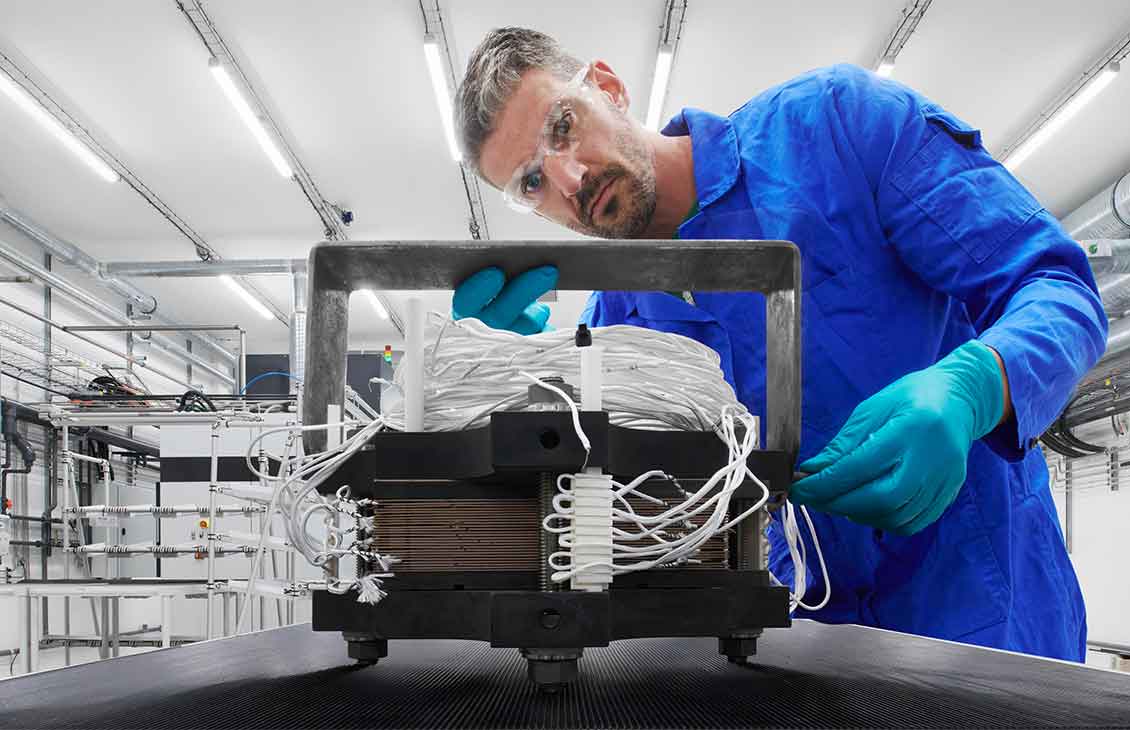Our History
A legacy and culture of pushing the limits of what technology can do.
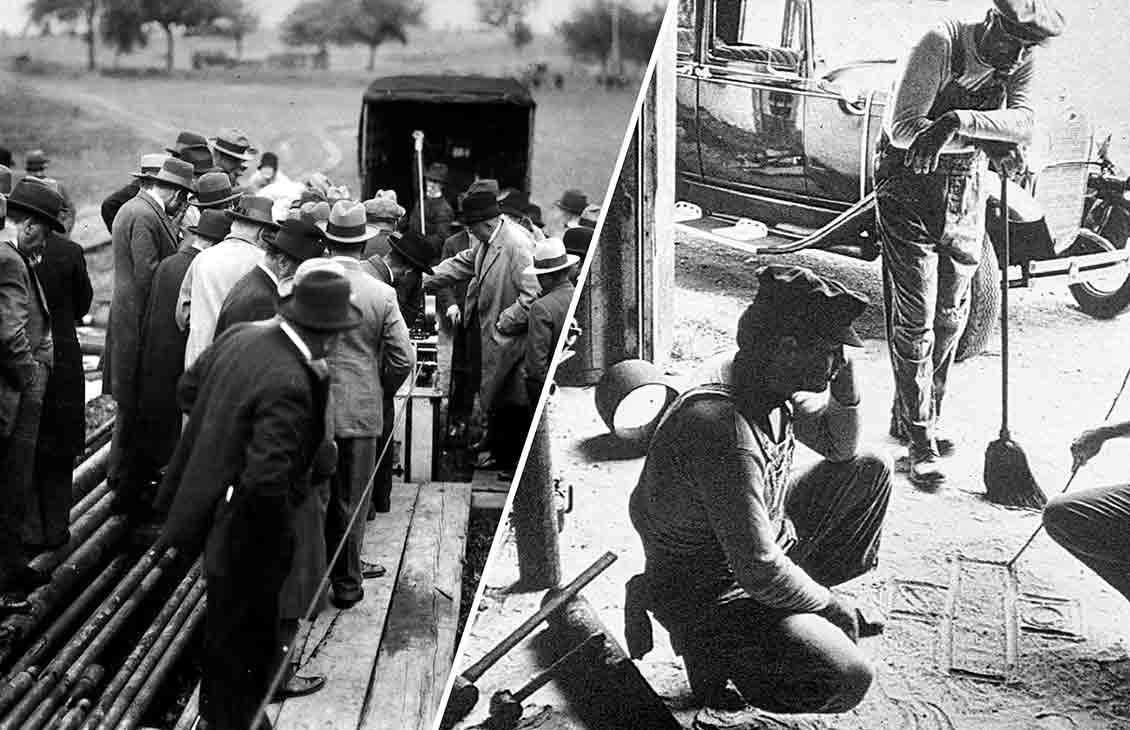
1870–1910s
Every great legacy starts with a bold vision
Born in France in 1878, Conrad Schlumberger conceived the revolutionary idea of mapping subsurface rock bodies with electrical measurements. His technique would serve as the spark for a new, disruptive name in energy. Conrad and his brother Marcel began working together in 1919 to change the face of subsurface exploration.
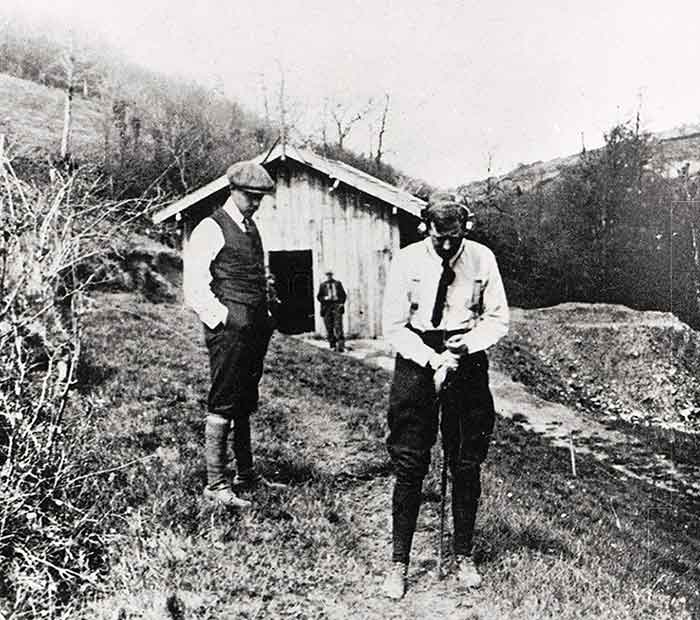
1920s
Pioneering the first of many firsts
Throughout the 1920s, the Schlumberger brothers conducted geophysical surveys across the globe. Later, the family created the first electrical resistivity well log—a turning point in the history of oil exploration. By 1929, electrical coring was being conducted around the world, a testament to scaling innovation in the company’s big beginnings.
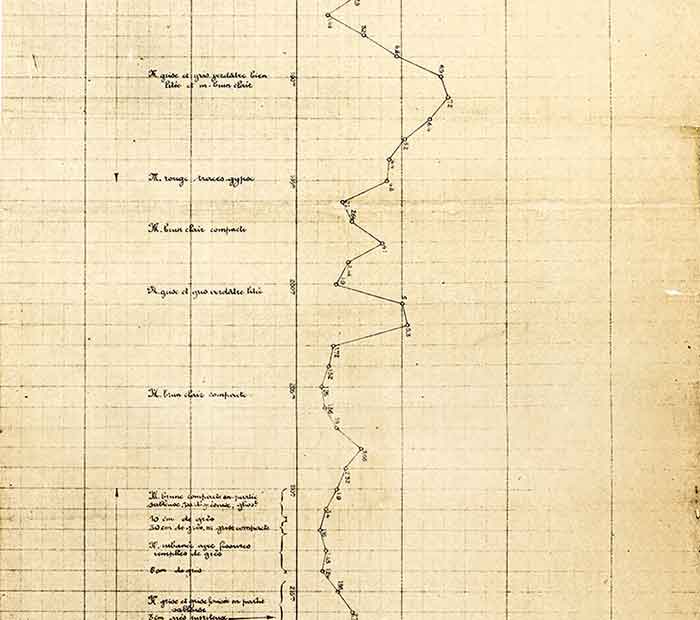
1930s
A global innovator takes shape
By the mid-1930s, electrical coring had taken the industry by storm—and with it, Schlumberger began to resemble the global force it is today. The company expanded to the biggest oil-producing countries, including Kuwait, Iraq, and Columbia, and grew its number of teams almost 20 times before the end of the decade. Though Conrad died in 1936, he lived to see his family name become a leader on the frontier of energy innovation.
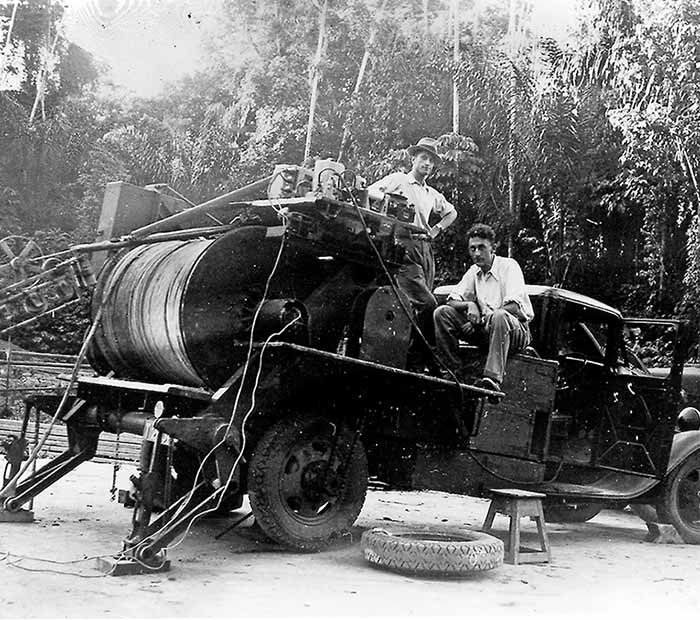
1940s
A changing company with growing opportunity
While the war slowed progress, industry innovations and modernization, like the first offshore oil rigs, would help propel Schlumberger forward. In 1948, Henri Doll established the Schlumberger-Doll Research Center, the springboard for breakthroughs and bold thinking for the company through the second half of the century—and a hub of innovation still today. And as the company continued to grow globally, teams grew with more local recruits, creating the cultural diversity that still defines SLB today.
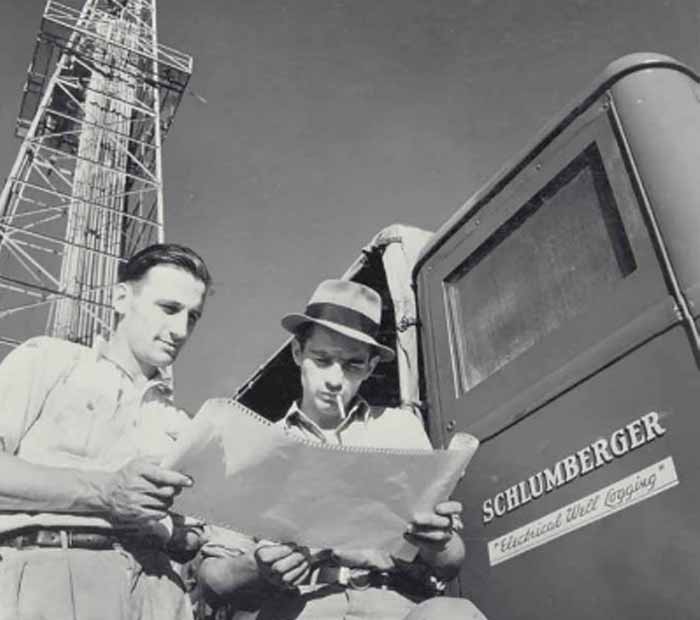
1950s
New technology, strategic acquisitions
As electronics changed the industry, Schlumberger pushed its own innovation, exploring new technologies like microlaterolog and microneutron tools and its industry-standard induction array, introduced in 1959. And with several strategic acquisitions and company restructuring, Schlumberger began to build a greater spectrum of capabilities for the future.
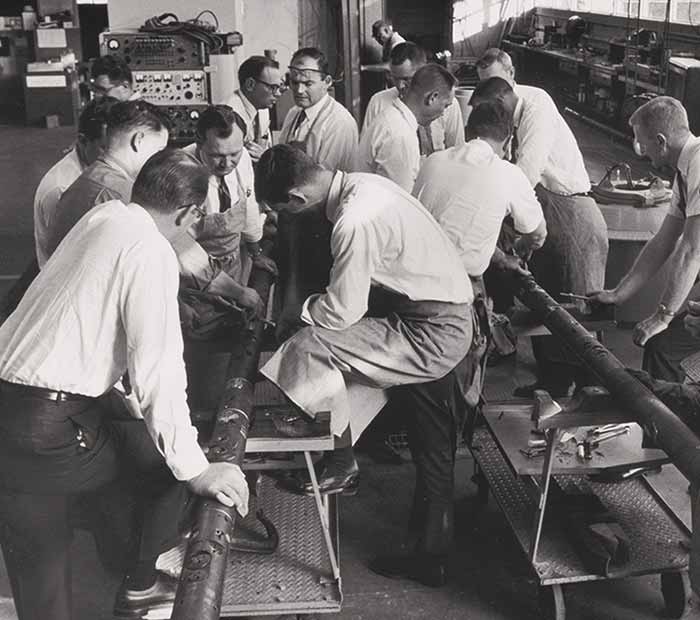
1960s
Schlumberger grows, from the ocean to the moon
Schlumberger technology began to be used in new ways, from uncovering sunken vessels with electrodes to providing calculations to NASA during the space race. Meanwhile, the company was listed on the New York Stock Exchange in 1962. Schlumberger continued its rapid development with new acquisitions, partnerships, and ventures that have come to define its collaborative changemaking.

1970s
Innovating to lead
The boom of engineering and computer power in the 1970s helped Schlumberger reach new heights as the market leader, powered by its unparalleled range of tools. As an early tech adopter, Schlumberger joined ARPAnet in 1975, a research network that would become the Internet. Schlumberger also introduced the first-generation sonic digital tool for uphole processing. And with the opening of the Schlumberger Museum in Normandy, Schlumberger affirmed itself as a company with a legacy worth celebrating.
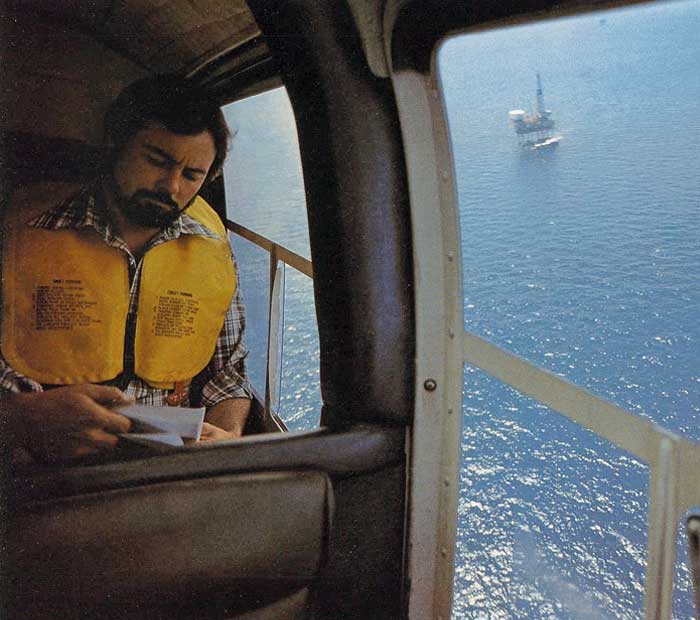
1980s
Connecting minds across the world
Striving to build a global research network, Schlumberger opened the Cambridge Research Center in England and an engineering center in Japan to drive innovation and explore new approaches and technologies. This expansion was fueled by the company’s pioneering digital connectivity. Schlumberger implemented its first international data links with email and established the Schlumberger Information Network, the first-ever commercial ARPANet-based intranet.
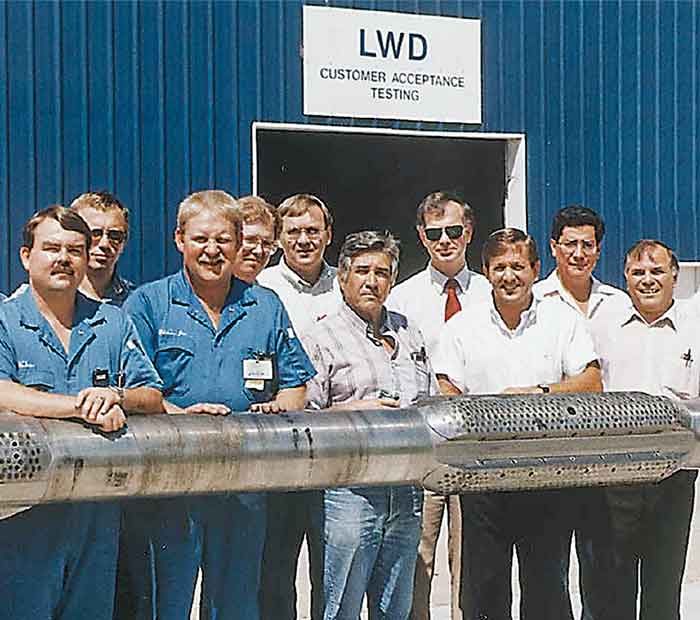
1990s
Creating powerful new products
In the 90s, Schlumberger launched several products that revolutionized drilling and logging operations, improving precision and cost-effectiveness like never before. At the same time, Schlumberger continued to make strategic acquisitions and partnerships with other companies and the scientific community to unlock new possibilities.
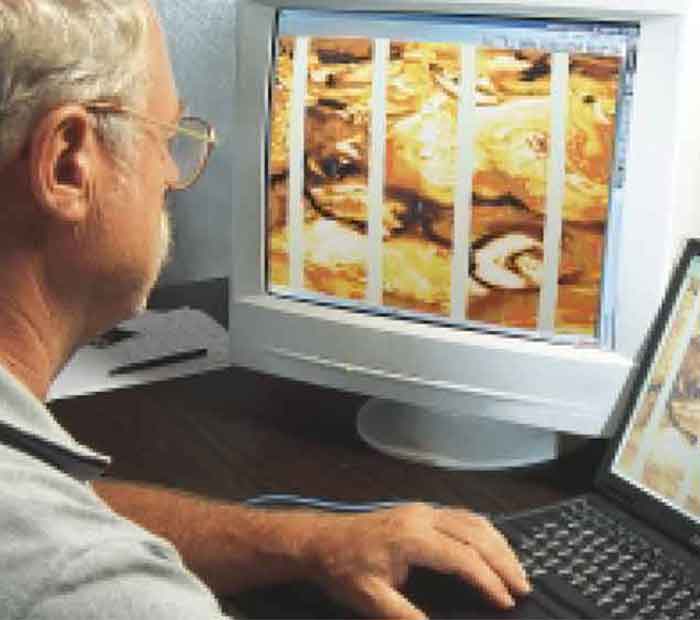
2000s
Recommitted to the foundations of SLB
In the first decade of the 21st century, Schlumberger strengthened its core offerings. It helped take industry understanding of reservoirs to a new level with the launch and integration of new technology, including 4D reservoir monitoring. Schlumberger also pioneered the PowerDrive rotary steerable system with integrated measurements. This technology enabled horizontal well drilling at industrial scale, unlocking new possibilities in energy access.
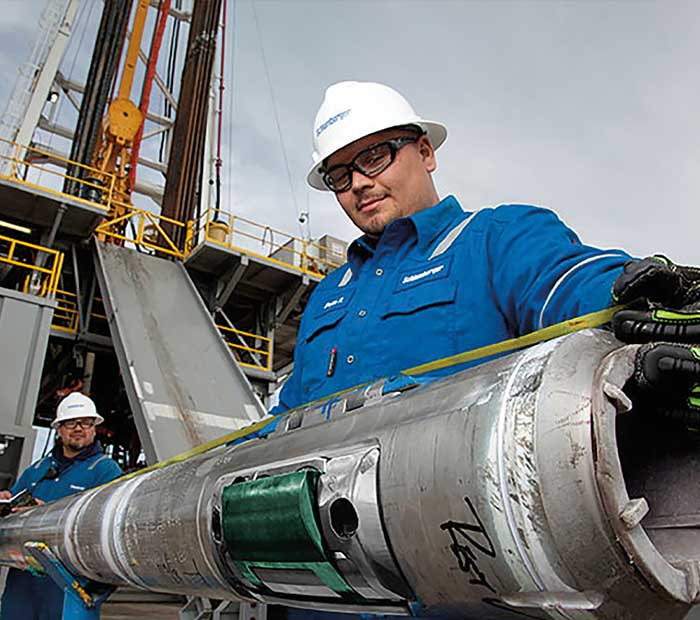
2010s
Adapting to a new energy landscape
The industry continued to shift through the 2010s, and Schlumberger shifted with it, innovating new products and technologies in imaging as well as for shale and gas plays. At the same time, Schlumberger remained steadfast in its commitment to R&D by building new research centers, tapping into new talent to build more tailored solutions for new challenges.
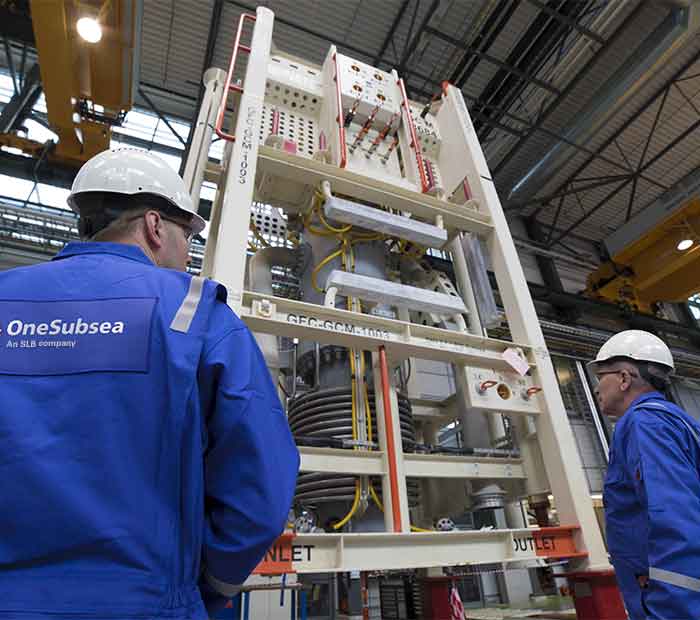
2020s–Today
Every great legacy has an eye on tomorrow
In October 2022, SLB introduced its new name, announcing a bold vision for a decarbonized energy future. Building on a century of innovation, SLB continues developing technologies that make oilfield operations cleaner, more efficient, and resilient. With market leading solutions in the rapidly growing new energy sector, the era sets the stage for the company as a leader in energy innovation, committed to driving progress for people and the planet.
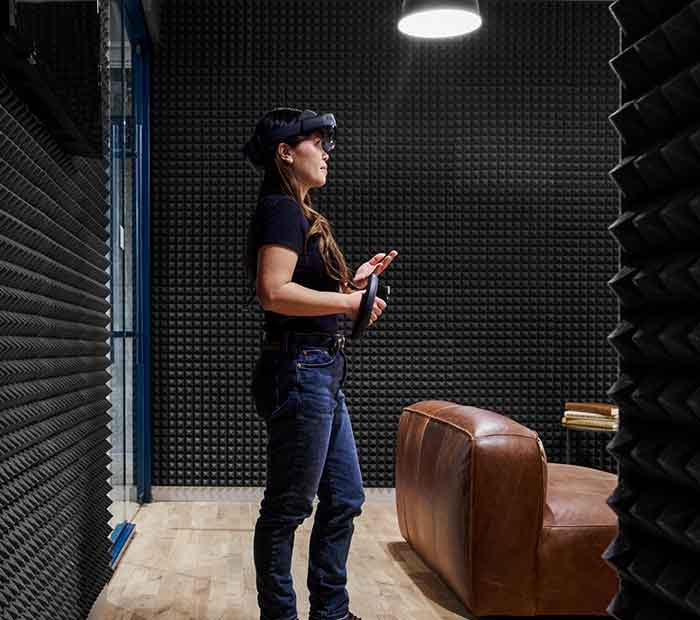

Striking a new energy equilibrium
The future of energy is about balancing accessibility and security while decarbonizing the industry to reach net zero. That’s the future we’re working toward every day.
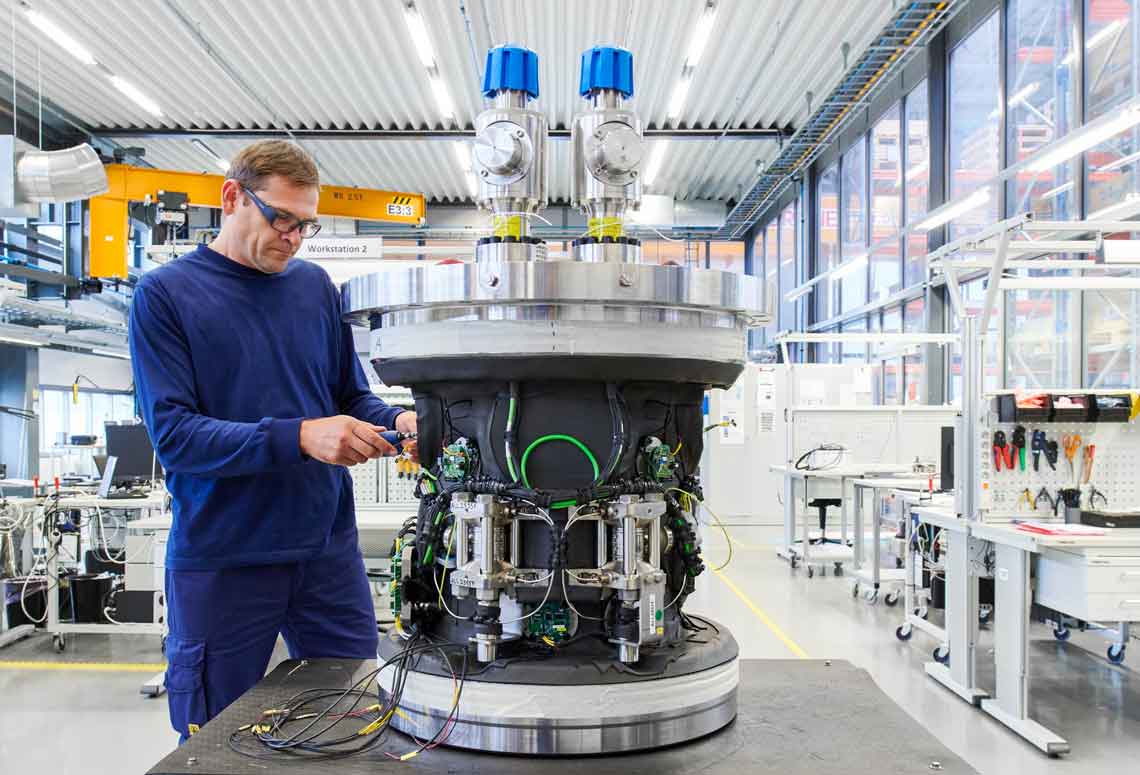
We’re transforming the energy industry. Again.
We’ve revolutionized what energy can do throughout our history. Now, we’re ready for the next challenge. And what got us here—science, technology, and engineering—will be key to taking us where we need to go.

Visit our museum
Enjoy an amazing immersive experience that depicts a century of energy innovation at our museum in Normandy, France.
Learn MoreLearn more about SLB

Engineering access and equality worldwide
It’s not just about in-country value, a significant part of our efforts is dedicated to empowering future generations to develop the technology we need for a balanced planet.
Take The Schlumberger Foundation, for example. It’s accelerating gender equality in STEM education and has supported more than 900 women from 93 countries since 2004.
